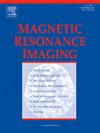Diagnostic accuracy of segmental strain analysis by cardiac magnetic resonance feature tracking for chronic myocardial ischemic scar assessment
IF 2
4区 医学
Q2 RADIOLOGY, NUCLEAR MEDICINE & MEDICAL IMAGING
引用次数: 0
Abstract
Rationale and objective
This study investigates the potential of segmental strain parameters derived from cine magnetic resonance imaging (MRI) using feature tracking (FT) to detect chronic ischemic scars in patients with ischemic heart disease, offering an alternative to late gadolinium enhancement (LGE) MRI, which has limitations such as long scan times and contraindications to gadolinium.
Patients and methods
A total of 47 patients with chronic coronary syndrome and 20 healthy controls were enrolled, with CMR examinations performed on a 1.5 Tesla MRI system. Strain parameters were analyzed from 1072 myocardial segments. Myocardial segments were categorized into four groups: healthy controls, remote myocardium (no late gadolinium enhancement), scarred-viable (<50 % scar transmurality), and nonviable (>50 % scar transmurality).
Results
Results showed significant differences in segmental peak circumferential strain (SPCS), peak radial strain (SPRS), and peak longitudinal strain (SPLS) between scarred viable and nonviable segments compared to remote and control segments, with all p-values <0.001. Specifically, SPCS had a superior ability to distinguish scarred myocardium from remote tissue, showing an area under the curve (AUC) of 0.77, with a sensitivity of 71.5 % and specificity of 70 %. For differentiating nonviable from viable myocardium, SPCS achieved an AUC of 0.80, with a sensitivity of 82.02 % and specificity of 70.21 %.
Conclusion
CMR-FT strain analysis is promising complementary tool, particularly in situations where contrast administration is contraindicated or when a rapid, non-contrast assessment of myocardial viability and potential scar burden is desired.
心脏磁共振特征跟踪的节段应变分析在慢性心肌缺血瘢痕评估中的诊断准确性
本研究探讨了利用特征跟踪(FT)从电影磁共振成像(MRI)获得的节段应变参数检测缺血性心脏病患者慢性缺血性瘢痕的潜力,为晚期钆增强(LGE) MRI提供了一种替代方案,后者具有扫描时间长和钆禁忌症等局限性。患者和方法共纳入47例慢性冠状动脉综合征患者和20例健康对照者,在1.5 Tesla MRI系统上进行CMR检查。对1072段心肌的应变参数进行分析。心肌段分为四组:健康对照组、远端心肌(无晚期钆增强)、疤痕存活(50%疤痕跨壁性)和不存活(50%疤痕跨壁性)。结果疤痕活节段和非活节段的峰值周向应变(SPCS)、峰值径向应变(SPRS)和峰值纵向应变(SPLS)与遥控节段相比有显著差异,p值均为<;0.001。具体而言,SPCS在区分瘢痕心肌和远处组织方面具有优越的能力,曲线下面积(AUC)为0.77,灵敏度为71.5%,特异性为70%。SPCS鉴别非活心肌和活心肌的AUC为0.80,敏感性为82.02%,特异性为70.21%。结论cmr - ft应变分析是一种有希望的补充工具,特别是在造影剂禁用或需要快速、非造影剂评估心肌活力和潜在疤痕负担的情况下。
本文章由计算机程序翻译,如有差异,请以英文原文为准。
求助全文
约1分钟内获得全文
求助全文
来源期刊

Magnetic resonance imaging
医学-核医学
CiteScore
4.70
自引率
4.00%
发文量
194
审稿时长
83 days
期刊介绍:
Magnetic Resonance Imaging (MRI) is the first international multidisciplinary journal encompassing physical, life, and clinical science investigations as they relate to the development and use of magnetic resonance imaging. MRI is dedicated to both basic research, technological innovation and applications, providing a single forum for communication among radiologists, physicists, chemists, biochemists, biologists, engineers, internists, pathologists, physiologists, computer scientists, and mathematicians.
 求助内容:
求助内容: 应助结果提醒方式:
应助结果提醒方式:


